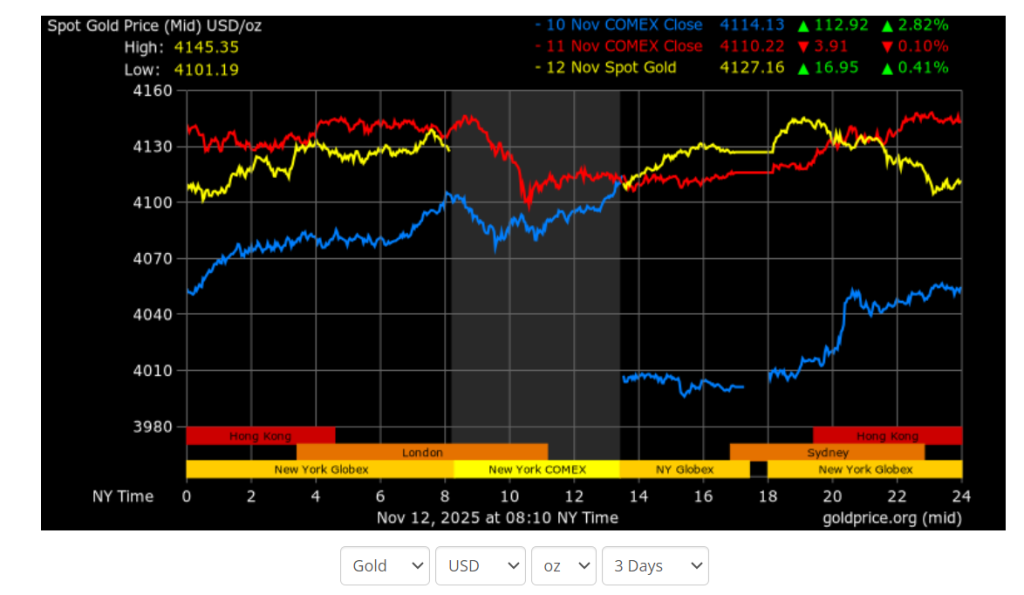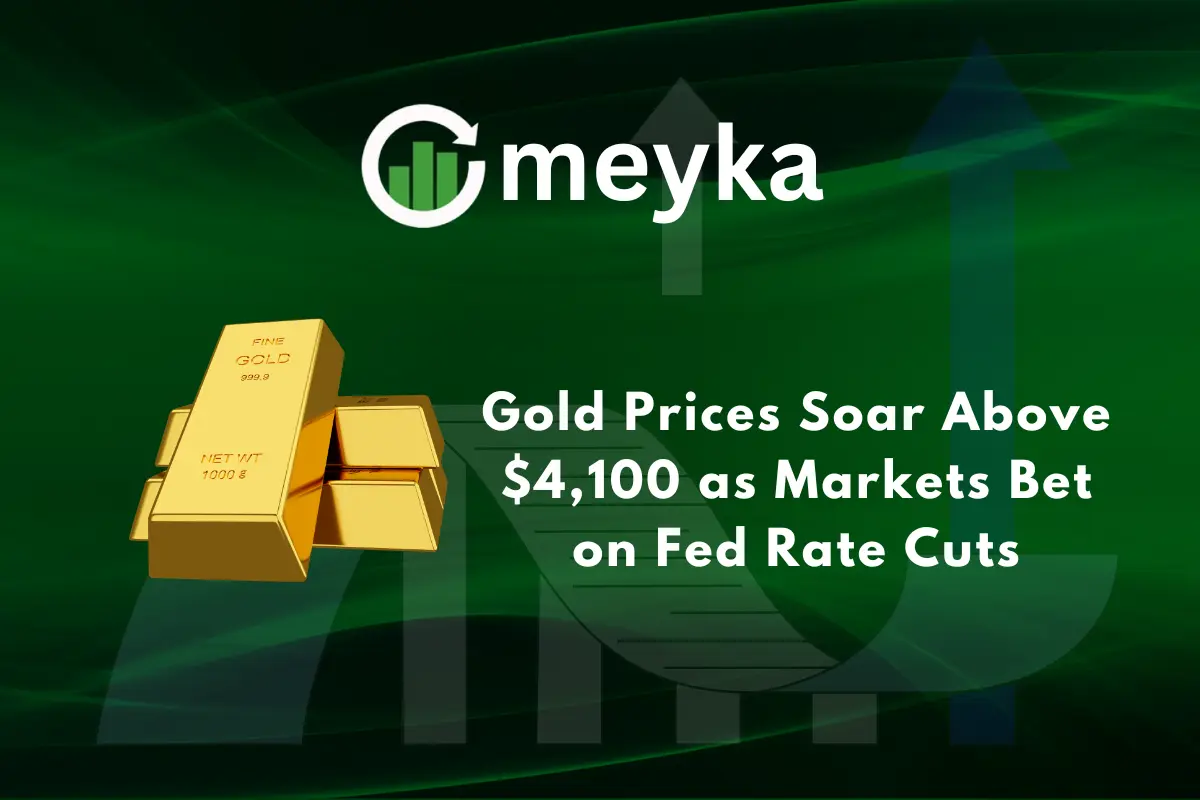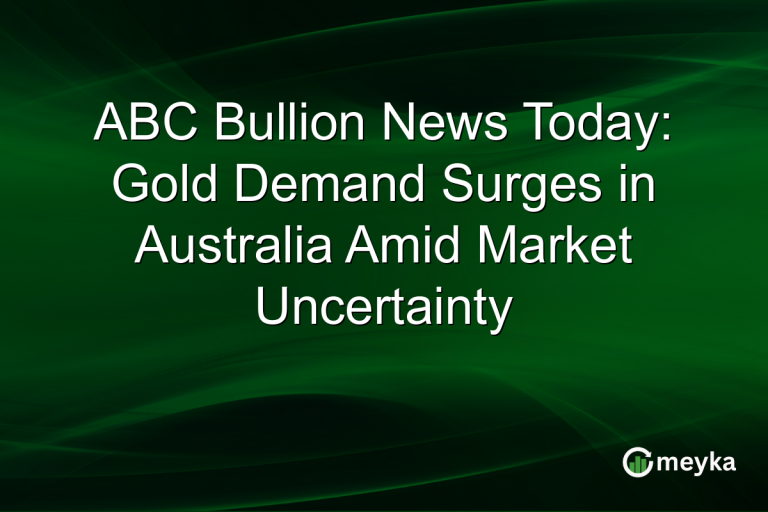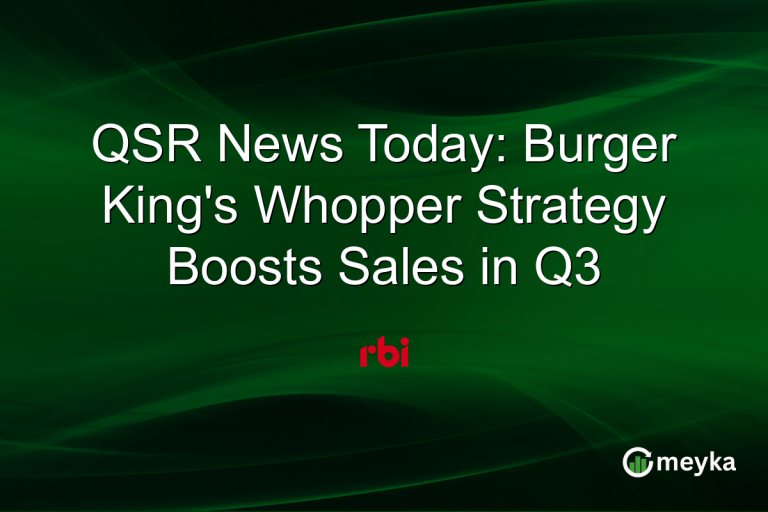Gold Prices Soar Above $4,100 as Markets Bet on Fed Rate Cuts
Gold Price surged past the $4,100 per ounce mark in early November 2025, signalling one of the strongest rallies in recent decades. Investors are increasingly betting that the Federal Reserve will begin cutting interest rates soon and that has given a powerful lift to gold’s appeal. Lower rates reduce the cost of holding non‑yielding assets like gold, making them more attractive.
At the same time, worries about inflation, a slipping U.S. dollar and global economic uncertainty have added fuel to gold’s upward climb. For everyday investors, this moment offers a chance to understand why gold is rallying, how rate expectations play in, and what it might mean for portfolios moving forward.
Current Gold Market Scenario
The gold price recently surged past the $4,100 per‑ounce mark, with spot gold trading around $4,126.51 as of 12 November 2025. Futures for December delivery rose slightly to about $4,128.70. This represents a year‑to‑date gain of over 50 per cent, one of the strongest annual runs in decades.

The momentum came after weaker than expected U.S. jobs and consumer data (for example, job losses in October) triggered fresh hopes that the Federal Reserve will begin cutting interest rates. At the same time, investors were spooked by global uncertainty and increasing safe‑haven demand.
Technically speaking, the $4,100 to $4,130 zone now appears as a key support for bulls, with analysts eyeing a next leg up toward $4,250 or more if the breakout holds. Gold is not only rallying it’s doing so strongly, backed by a mix of fundamental and technical drivers.
Role of Fed in Gold Pricing
Interest‑rate policy has long been one of the main levers influencing the price of gold. When the Fed cuts rates, real yields often fall and holding gold (which pays no yield) becomes more attractive. Historical data show meaningful gold gains following past easing cycles.
Currently, markets are placing a high probability roughly 60-70 per cent on a rate cut as early as December 2025, rising into 2026. This expectation alone is pushing gold higher.
On the flip side, if the Fed signals a delay or avoids cuts, that could take wind out of gold’s sails. The data flow (jobs, inflation, consumer confidence) and Central‑Bank communication will matter a lot as the story unfolds.
Economic Factors Driving Gold Prices
Inflation & real interest rates: Gold generally performs well when inflation is sticky and real interest rates fall, since the opportunity cost of holding gold drops. Soft U.S. job numbers and weak consumer sentiment in early November 2025 reinforced the notion of slower growth and possible monetary easing.
U.S. dollar strength/weakness: Gold often moves inversely to the U.S. dollar. A weaker dollar translates into a more attractive gold price for overseas buyers. Although the dollar edged higher recently, the broad trend still favours gold amid global uncertainty.
Geopolitical/Global risks: Trade tensions, the long U.S. government shutdown, and broader economic worries add to safe‑haven demand. For instance, uncertainty around U.S.-China trade and delayed economic data weighed on market sentiment, boosting gold. These factors align with the current rally and provide a robust backdrop for gold’s advance.
Investor Behavior and Market Reactions
Institutional and retail investors appear to be increasing exposure to gold both directly (physical bullion, coins) and indirectly (via ETFs and futures). The current mood is heavily tilted toward “protective” assets rather than purely speculative.
Safe‑haven appeal is strong: in times of uncertainty monetary, geopolitical or economic gold has historically offered refuge. Some money is shifting out of high‑risk assets (like over‑valued tech stocks) into tangible assets including gold. Analysts note the momentum has changed: what looked like a correction became a breakout.
That said, heavy bullish sentiment also raises the risk of sharp pullbacks, especially if expected rate cuts don’t materialize or global growth improves sharply (reducing safe‑haven demand).
Global Perspective
Demand for gold is not just a U.S. story. Emerging market appetite especially in countries like India and China is significant. While exact numbers for each region vary, the global nature of gold means that currency moves, import‑duty regimes and regional economic conditions all matter.
In international markets, the weakness in the dollar and concern over U.S. fiscal deficits have increased cross‑border flows into gold. Some central banks are also active buyers, reinforcing structural demand. Gold’s rally is supported by both domestic U.S. drivers (Fed policy, data) and global factors (currency, reserves, trade).
Implications for Investors
If you hold or consider adding gold, this is an important period to assess both risk and reward. On the reward side: the current environment supports low real yields, higher inflation risk, safe‑haven demand. On the risk side: high valuations, crowded trades, and potential policy reversals.
From a strategy perspective: gold may serve as a portfolio hedge or diversification asset rather than a growth engine. Investors should monitor the timing of rate‑cuts and inflation trends closely. Also, consider allocation size carefully: exaggerated gold exposure may reduce returns if conditions swing. Ultimately, this is not a passive moment; active monitoring is smart.
Future Outlook & Conclusion
Looking ahead, if the Fed begins a meaningful easing cycle, gold could target $4,200-$4,250+ per ounce in the near term. Several analysts already suggest a move toward $4,700+ by 2026. Conversely, if economic data improves sharply or inflation falls faster than expected, gold could encounter pressure and consolidate.
Key watch‑points include: U.S. Non‑Farm Payrolls, Consumer Price Index, dollar index, and Fed commentary. The path of global growth and geopolitics remains uncertain and gold will respond. The probability of higher gold remains elevated but so is the need for vigilance.
Disclaimer: The content shared by Meyka AI PTY LTD is solely for research and informational purposes. Meyka is not a financial advisory service, and the information provided should not be considered investment or trading advice.






